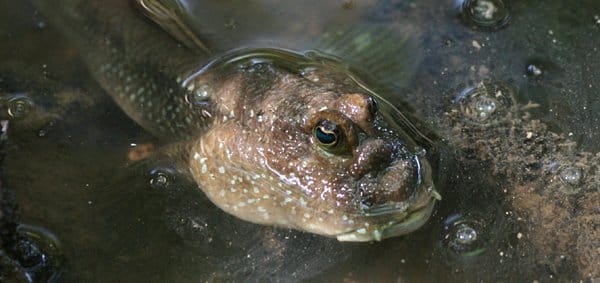
SINGAPORE, DECEMBER 2012 – Ask any birder where you should go birding in Singapore and the short list will always include Sungei Buloh Wetland Reserve, this city-state’s finest wetlands. Winter can be particularly auspicious, since that’s when migratory shorebirds descend upon the area. Since I was in Singapore in winter, Sungei Buloh seemed like the best place to kick off my introduction to Southeast Asian avifauna. My bus ride to Sungei Buloh was well over an hour long, made worse by my unfamiliarity with the system and the Chinese drivers’ consistent unfamiliarity with the English language as I spoke it. When I did arrive, I still had a long, hot walk to the reserve itself. This presented the perfect opportunity to become acquainted with Singapore’s common birds. Of course, I’d already encountered tons of Javan Mynas mixed with a few Commons. Also on the scene were a diversity of common doves and pigeons: Rock Pigeon, Spotted Dove, Zebra Dove, and Pink-necked Green Pigeon. That last bird is an absolute prismatic stunner, but you’d be surprised at how quickly it becomes mundane. I also pulled three species of tailorbird along with Asian Glossy Starling, Black-naped Oriole, and White-bellied Sea-Eagle en route. Also worth the walk was the shot at Baya Weavers along the road.
The visitor center and facilities at Sungei Buloh are quite impressive, clearly designed with birders in mind. I went right to the main pool to get a ration of Old World shorebirds. Tringa sandpipers were in full effect throughout: Common Sandpiper, Common Greenshank, Marsh Sandpiper, and Common Redshank were joined here and elsewhere by Whimbrel, Eurasian Curlew, and Pacific Golden-Plover. The wetlands actually host a much higher diversity of shorebirds, but many of the more exotic sandpipers and the many other plover species had come and gone before mid-December.
The big deal bird at Sungei Buloh the week I was there was not a sandpiper but a wader. Birdlife International has classified the Chinese Egret as Vulnerable, with researchers pegging the total population somewhere around 3,000. One of those rare egrets was consorting with the far more numerous Little Egrets, but fortunately I managed to find it. At least I think I did. I also found Great Egret, Intermediate Egret, Gray Heron, Purple Heron, and even one Yellow Bittern. Most interesting were the Milky Storks mixed in with the waders. Storks are always a welcome sight, but listers cannot in good conscience count these birds, which hang out in the wetlands during the day and fly back to the zoo every night. Guess the grub is good at the zoo.
 The magnificent Mudskipper, lord of the mangroves
The magnificent Mudskipper, lord of the mangroves
Exploring the full extent of Sungei Buloh, as I did, requires a whole lot of walking. Despite the sweat dripping into my eyes, I spotted three of the area’s kingfishers – White-throated, Black-capped Kingfisher, and Collared – two of the sunbirds – Olive-backed and Copper-throated – and solo artists like Emerald Dove, Indian Cuckoo, Common Iora, Pied Fantail, Scarlet-backed Flowerpecker, and Arctic Warbler. The bird I’m most proud of, though, is not the Chinese Egret but rather an owl I found by myself, a far too uncommon occurrence. That just makes the Buffy Fish Owl peering through the trees with its cold yellow stare that much sweeter.
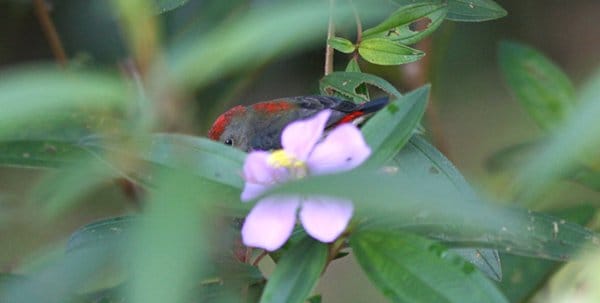 Scarlet-backed Flowerpecker hiding like all the other lovely birds
Scarlet-backed Flowerpecker hiding like all the other lovely birds
A long morning at Sungei Buloh was punctuated by a long walk back to the bus stop, which allowed me to add Long-tailed Shrike to the day list. All in all, I enjoyed Sungei Buloh, which is the kind of a special ecosystem that appeals to novice nature watchers and serious observers alike. December is a slow month compared to early and late winter, so plan accordingly. But do plan to visit, because Sungei Buloh is unlike any other place in Singapore.
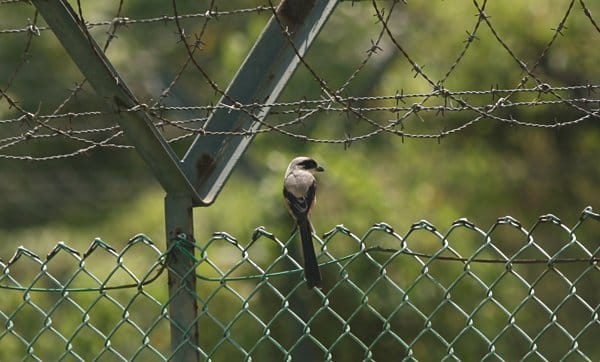 Long-tailed Shrikes look natural amidst razor wire
Long-tailed Shrikes look natural amidst razor wire
TRIP LIST: Yellow Bittern, Gray Heron, Purple Heron, Great Egret, Intermediate Egret, Chinese Egret, Little Egret, White-bellied Sea-Eagle, White-breasted Waterhen, Pacific Golden-Plover, Common Sandpiper, Common Greenshank, Marsh Sandpiper, Common Redshank, Whimbrel, Eurasian Curlew, Rock Pigeon, Spotted Dove, Emerald Dove, Zebra Dove, Pink-necked Pigeon, Indian Cuckoo, Buffy Fish-Owl, Black-nest Swiftlet, House Swift, White-throated Kingfisher, Black-capped Kingfisher, Collared Kingfisher, Common Flameback, Common Iora, Long-tailed Shrike, Black-naped Oriole, Pied Fantail, House Crow, Pacific Swallow, Yellow-vented Bulbul, Arctic Warbler, Dark-necked Tailorbird, Rufous-tailed Tailorbird, Ashy Tailorbird, Asian Glossy Starling, Javan Myna, Common Myna, Scarlet-backed Flowerpecker, Copper-throated Sunbird, Olive-backed Sunbird, Eurasian Tree Sparrow, Baya Weaver

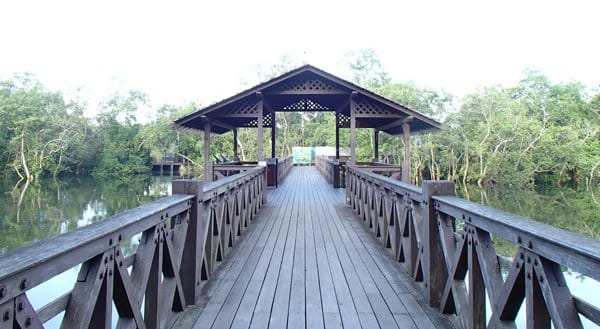
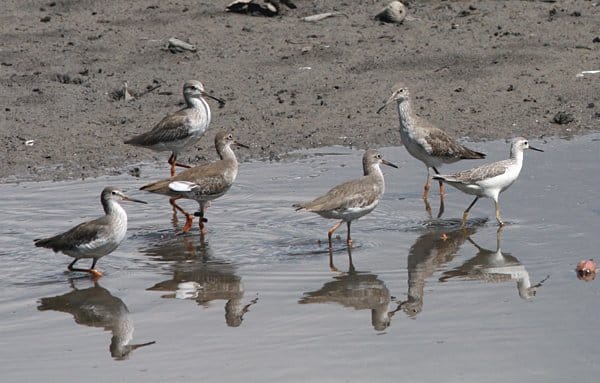











Good to know you enjoyed it despite the heat and humidity!
I am jealous.
Wow,what a beautiful day of tropical birding! Chinese Egret, Buffy Fish Owl, Milky Stork, shorebirds, and other stunners- sounds like a dream come true.
Great photos! Good to see this side of Singapore, as all the photos I’d ever seen only show the dense high-rises, and the only nature I’d seen was on their beautiful postage stamps.
Singapore may be dense but it is one of the greenest cities I ever visited. Birds abound just about everywhere. Last September I had the opportunity to visit Singapore and Sungei Buloh for the second time. A highlight of the visit was finding an Oriental Plover on the mudflats below the Seletar Dam.
Lovely post, but are you entirely sure any species of Green Pigeon can ever become mundane?
After living in Okinawa for 4 years, Ryukyu Green Pigeon became somewhat mundane.
Can’t go wrong with all those birds AND mudskippers!
Nice to get a trip report from a real birder. Thanks